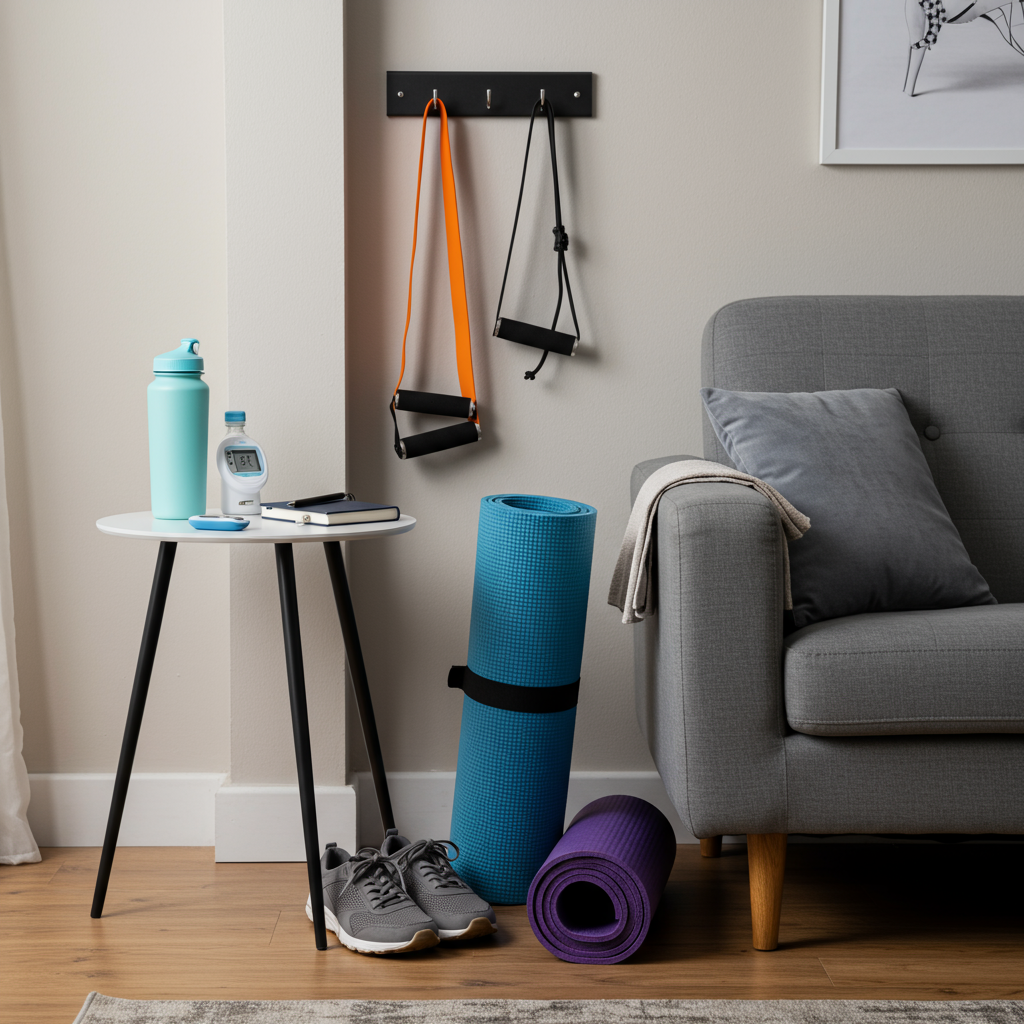Od malih koraka do velikih dobitaka: Izgradnja rutine vježbanja koja mijenja upravljanje dijabetesom
Vježbanje je možda najmoćnija ne-lijekovita intervencija za upravljanje dijabetesom. Ipak, unatoč njegovim dokazanim prednostima, uspostavljanje stalne rutine vježbanja mnogima je izazov. Kao osoba koja živi s dijabetesom ili je u riziku od njega, navike vježbanja koje izgradite danas mogu dramatično promijeniti vaše metaboličko zdravlje sutra. Istražimo kako stvoriti održive rutine vježbanja koje ostaju — počevši od sitnih navika i gradeći prema transformativnim promjenama.
Neurobiološka osnova formiranja navika
Kada shvatimo kako naš mozak formira navike, dobivamo snažne uvide za stvaranje trajnih promjena. Neurokemija iza formiranja navika uključuje dopaminom vođen sustav nagrađivanja koji, kada se pravilno iskoristi, može povremeno vježbanje pretvoriti u automatsko ponašanje.
Ključ je u onome što neuroznanstvenici nazivaju "petlje navika"—procesu od tri dijela koji se sastoji od znaka, rutine i nagrade. Za one koji upravljaju dijabetesom, ovaj okvir je posebno vrijedan. Kada dosljedno uparujemo određeni znak (poput stavljanja tenisica za hodanje kraj vrata) s rutinom (desetominutna šetnja) i doživimo nagradu (poboljšane vrijednosti glukoze ili jednostavno zadovoljstvo obavljenim zadatkom), jačamo neuronske puteve koji vremenom čine vježbanje sve automatskijim.
To objašnjava zašto je započinjanje s malim, gotovo smiješno skromnim obvezama vježbanja toliko učinkovito. Petominutna šetnja ili tri jednostavne vježbe snage mogu se činiti nevažnima, ali ti mikro-zadaci zaobilaze otpor mozga na promjenu dok grade neuronsku arhitekturu za veće navike kasnije.

Metaboličke prilagodbe: Zašto je dosljednost važnija od intenziteta
Za upravljanje dijabetesom, dosljednost vaše rutine vježbanja značajno je važnija od njenog intenziteta, posebno na početku. Redovita, umjerena aktivnost uzrokuje nekoliko ključnih metaboličkih prilagodbi koje izravno utječu na glikemijsku kontrolu:
-
Povećana osjetljivost na inzulin: Čak i skromno, ali dosljedno vježbanje povećava translokaciju GLUT4, omogućujući mišićima učinkovitiju apsorpciju glukoze iz krvi bez potrebe za dodatnim inzulinom.
-
Mitohondrijska biogeneza: Redovito vježbanje potiče stvaranje novih mitohondrija — staničnih "elektrana" koje metaboliziraju glukozu i masne kiseline za energiju.
-
Poboljšana sposobnost pohrane glikogena: Dosljedni trening povećava sposobnost mišića da pohranjuju glukozu u obliku glikogena, čime se stvara veći "spremnik" za uklanjanje glukoze iz krvi.

Ove prilagodbe odvijaju se postupno i iznad svega zahtijevaju dosljednost. Petnaestominutna dnevna šetnja donijet će značajnija metabolička poboljšanja nego iscrpljujući 90-minutni trening u teretani jednom tjedno nakon kojeg ste preumorni za vježbanje narednih nekoliko dana.
Ovo razumijevanje treba promijeniti naš pristup vježbanju za upravljanje dijabetesom — najprije se fokusirajte na učestalost i dosljednost, a potom postupno gradite trajanje i intenzitet kako ove osnovne navike postaju automatske.
Uredite svoju okolinu za uspjeh
Možda najpodcjenjeniji aspekt formiranja navika je dizajn okoline. Vaša fizička okolina i društveni kontekst snažno utječu na ponašanje, često više nego volja ili motivacija.
Kako biste stvorili trajne navike vježbanja:
Učinite znakove očitima: Stavite tenisice za hodanje kraj vrata, držite trake za otpor vidljivima na stolu ili postavite odjeću za vježbanje noć prije.
Smanjite prepreke: Uklonite korake između sebe i vježbanja. Upisujte se u teretanu blizu kuće ili posla, a ne na drugom kraju grada. Stvorite posvećen prostor za vježbanje, čak i ako je to samo prostirka za jogu u kutu vaše sobe.
Povežite navike: Vežite nove navike vježbanja uz postojeće rutine. Primjerice, napravite pet minuta vježbi snage odmah nakon pranja zubi ili prošećite kratko nakon svakog obroka kako biste umanjili skokove glukoze poslije jela.
Stvorite odgovornost: Podijelite svoje ciljeve s drugima ili vježbajte s partnerima. Istraživanja pokazuju da društvena odgovornost značajno povećava pridržavanje rutini vježbanja.
Pratite svoje podatke: Posebno za upravljanje dijabetesom, praćenje razine glukoze prije i poslije različitih vrsta vježbanja daje snažnu povratnu informaciju o tome što vam odgovara, jačajući korisne navike vidljivim rezultatima.
Promišljenim uređenjem okoline činite vježbanje putem najmanjeg otpora umjesto stalne borbe s voljom.

Zaključak: Složeni učinak
Najjači princip kojeg se trebate sjetiti je da se male, dosljedne radnje zbrajaju tijekom vremena. Navika petominutne šetnje dnevno može se činiti beznačajnom sama po sebi, ali tijekom godine se pretvara u preko 30 sati fizičke aktivnosti koju vaše tijelo inače ne bi dobilo.
Za upravljanje dijabetesom, ovi mali, stalni napori rezultiraju poboljšanom osjetljivošću na inzulin, boljom glikemijskom kontrolom, smanjenom upalom i povećanom metaboličkom fleksibilnošću — sve što vodi do boljih zdravstvenih ishoda i potencijalno manje potrebe za lijekovima.
Započnite manjim nego što mislite da je potrebno, fokusirajte se na dosljednost umjesto intenziteta, uredite svoju okolinu za uspjeh i vjerujte u složeni učinak malih navika. Vaše buduće ja — i vaš mjerač glukoze — bit će vam zahvalni.
Reference:
Colberg, S. R., Sigal, R. J., Yardley, J. E., Riddell, M. C., Dunstan, D. W., Dempsey, P. C., ... & Tate, D. F. (2016). Physical activity/exercise and diabetes: a position statement of the American Diabetes Association. Diabetes Care, 39(11), 2065-2079.
Clear, J. (2018). Atomic habits: An easy & proven way to build good habits & break bad ones. Penguin Random House.






